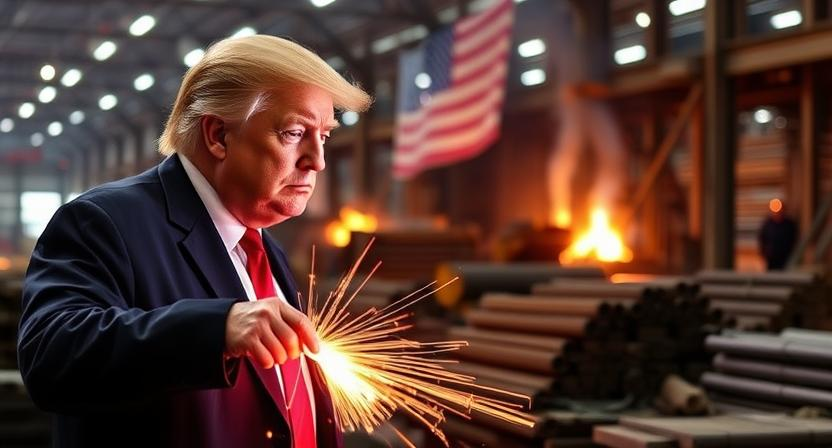
Former U.S. President Donald Trump has announced Trump Steel Aluminum Tariffs, imposing a 25% duty on steel and aluminum imports, effective February 10, 2025. This move aims to protect domestic industries and reduce reliance on foreign suppliers. However, many experts believe it could lead to higher costs for businesses and potential retaliation from trading partners. With these tariffs, the U.S. steel and aluminum market may experience both gains and losses, depending on how industries adapt.
Why Is Trump Imposing These Tariffs?
Trump justifies the Trump Steel Aluminum Tariffs by emphasizing national security and economic stability. According to him, American businesses face unfair trade policies from other nations, which hurts domestic industries. By imposing these tariffs, he aims to strengthen U.S. manufacturing and reduce dependence on imported metals.
Which Countries Will Be Affected?
Unlike previous policies, no exemptions will be granted. This means that major steel and aluminum suppliers like Canada, Mexico, China, and the European Union will also face these tariffs. Consequently, trade relations with these countries might become more complicated.

How Will Other Nations Respond?
Several countries have already voiced their concerns. Canada, a major steel exporter to the U.S., has hinted at possible countermeasures. Meanwhile, the European Union has also warned that it could introduce retaliatory tariffs on American goods. If these actions escalate, the result could be higher costs for industries and consumers worldwide.
Impact on the U.S. Economy
- Boost for U.S. Steel and Aluminum Industry
- Domestic steelmakers may benefit due to reduced competition from foreign suppliers. As a result, production and job opportunities could rise.
- Higher Costs for Businesses
- However, industries that rely on steel and aluminum imports, such as the automobile and construction sectors, will face higher production expenses. These added costs might eventually be passed on to consumers.
- Possible Job Gains and Losses
- While the Trump Steel Aluminum Tariffs might create jobs in steel manufacturing, other industries could experience layoffs due to increased costs.
- Stock Market Reactions
- Investors have already reacted to the announcement. Consequently, stock market fluctuations are expected in the coming weeks, depending on how international trade partners respond.
Is This a Repeat of 2018?
This situation is similar to Trump’s 2018 tariffs on steel and aluminum. At that time, U.S. steel production increased, but many industries suffered due to rising costs. Therefore, analysts believe that the same challenges may arise again.
What’s Next?
Since the tariffs take effect soon, businesses and governments worldwide are closely watching developments. If other countries implement retaliatory tariffs, a global trade conflict might emerge.
Conclusion
The Trump Steel Aluminum Tariffs represent a significant shift in U.S. trade policy. While they aim to protect domestic industries, they could also increase costs for businesses that depend on imports. As the situation unfolds, companies and policymakers will need to adapt to these changing trade dynamics.
stay here for more updates :- marketdarpan.com


